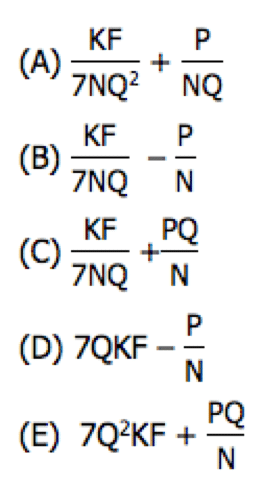
First, a GMAT Critical Reasoning practice question.
1) The Spotted Mole is a rodent that burrows underground and eats all forms of vegetable matter. Farmers are concerned that this mole could eat some of their commercial fruits, planted in above-ground planters and bins. The farmers need not worry about the Mole, though, because throughout the region in which the Spotted Mole is found, birds of prey such as hawks and falcons are active, and these birds would prey upon the Spotted Mole if the mole came above ground at all. Therefore, the Spotted Mole poses no threat to these totally above-ground fruits.
Which one of the following is an assumption on which the argument depends?
(A) The birds of prey capture and kill every single Spotted Mole that comes above ground.
(B) Some land-based mammals active in this region, such as fox, will also hunt and eat the Spotted Mole on a regular basis.
(C) No other animal could pose as significant a threat to the above-ground fruits as could the Spotted Mole.
(D) The times of day the Spotted Mole feeds are the same as the times of day that the birds of prey are in the air.
(E) Larger burrowing mammals, such as badgers or weasels, can dig up the burrows of the Spotted Mole, endangering those that remain underground.
An explanation will follow this article.
Finding the assumption
In the next section, I will talk about the Negation Test for verifying that a statement is an assumption of the argument, but first I want to dispel any idea that the Negation Test is the only way to find an assumption. There’s a much more basic approach, which I will call the “Bridge” Approach to finding assumption. Suppose we had the following nonsense CR argument:
2) Blah blah blah blah blah blah both P and Q. Blah blah blah P more than Q blah blah. Blah blah blah Q instead of P blah blah. Therfore, blah blah T.
Which one of the following is an assumption on which the argument depends?
A. Blah blah blah P or Q blah blah
B. Blah blah blab Q instead of P
C. Blah blah P and Q blah blah T
D. Blah blah blah W and T
E. Blah blah blah without any T
All the premises of the argument were discussing P & Q, and then suddenly the conclusion leaps to something completely different, T. Clearly, the assumption of the argument must be something that links, that creates a bridge between (P + Q) and T. Without knowing any of the details of this argument or even what P & Q & T even are, it seems likely that (C) is the answer to the nonsense question, because it is the only one that simultaneously mentions both P + Q and T.
This was a little extreme, but many GMAT CR arguments have premises discussing one topic, and then they make a significant leap to a related but different topic, and of course, the assumption is what bridges the premise-topics and the conclusion-topic. This does not work for all CR assumption questions, but when it does work, it is a lightning fast approach to these questions.
The Negation Test
This test always works, and it always a good way to verify an assumption. Here’s the rule:
If you negate a statement, and it’s still possible to imagine that the conclusion is still true even with this negated statement, then that original statement is definitely not an assumption of the argument.
If you negate a statement, and this negated statement is a devastating objection which shatters the argument and makes the conclusion untenable, then that original statement is an assumption of the argument.
Here’s a super-simple argument, with only three answer choices:
3) Alex likes this movie. Therefore, Betty will like it.
Find the assumption of the argument
A. Both Alex & Betty liked the same movie last year
B. Carla didn’t like this movie, and last year, she & Betty liked the same movie.
C. Betty likes the movies that Alex likes.
This is supposed to be a very easy question. We want the assumption, so let’s just apply the Negation Test to all three answers:
The negation of (A): Alex & Betty didn’t like the same movie last year —- a vaguely weakening objection, but that was last year, and this is this year: what Betty likes now might be the same as what Alex likes now. It’s at least conceivable that the negation of (A) could be true and yet the conclusion to this argument would hold. Therefore, (A) is not an assumption of the argument.
The negation of (B): Carla liked this movie, and last year, she & Betty liked the same movie. OR Carla didn’t like this movie, and last year, she & Betty didn’t liked the same movie. —- Either way, this answer just introduces the variable of another person. We don’t know how fickle Carla is, and whether her taste overlaps in any meaningful or consistent way with Betty’s. Therefore, it is possible that either of these negations could be true and the conclusion would still hold. Therefore, (B) is not an assumption of the argument.
The negation of (C): Betty doesn’t like the movies that Alex likes. —- Hmm, if this is true, and if Alex likes this movie, it seems necessarily to imply that Betty won’t like this movie! This directly contradicts the conclusion of the argument. Negating (C) absolutely torpedoes this argument, so (C) must be an assumption.
BTW, notice that choice (A) constitutes anecdotal data: this can never be an assumption. Notice that the original argument has the strange logical jump from what Alex likes to what Betty likes, so using the Bridge Approach, one might have zeroed in on the correct assumption even before applying the Negation Test. Nevertheless, the Negation Test always works, so it’s always a good test of an assumption.
Summary
If any ideas in this post were new to you, you may want to give that argument at the top a second look before reading the solution below. Here’s another GMAT CR Assumption practice question:
4) http://gmat.magoosh.com/questions/3113
If you have anything you would like to share, let us know in the comments section below.
Solution to the practice question
1) This is a question on which the Bridge Approach is not necessarily particularly fruitful. We will use the Negation Test on each answer choice.
(A) The negation of an “every” statement, “not every”, is not necessarily a “none” statement — “not every” could mean “none” or “a few” or “some” or even “most, but not all”. Therefore, the negation of (A) could be:
The birds of prey capture and kill most, but not all, Spotted Moles that come above ground.
Suppose the birds of prey kill 99% of the Spotted Moles that come above ground, and leave only the small and weak 1%. Well, this small and weak remnant is not going to pose a serious threat to the potted fruits, so it’s possible to imagine the conclusion works even when we negate this statement. This is not an assumption.
(B) The opposite of “some” is “none”. Suppose it’s true that “No land-based mammals active in this region will hunt and eat the Spotted Mole on a regular basis.” OK, well it’s still possible that the birds of prey will keep the Spotted Moles in check. It’s possible to imagine the conclusion works even when we negate this statement. This is not an assumption.
(C) Suppose it’s true that “Other animal do pose as significant a threat to the above-ground fruits as could the Spotted Mole.” Well, that wouldn’t work out so well for the farmers, but this argument is specifically about the threat posed by the Spotted Mole. Whether other animals are simultaneously posing a threat to the fruit is irrelevant to evaluating how much of a threat the Spotted Moles pose. It’s possible to imagine the conclusion works even when we negate this statement. This is not an assumption.
(D) Suppose it’s true that: “The times of day the Spotted Mole feeds are different from the times of day that the birds are prey are in the air.” Wait a moment! If the Spotted Moles go above ground to feed at times when the birds of prey are not in the air, then the birds of prey would not be around to capture them, and therefore there would be no impediment to the Spotted Moles munching away on those above-ground fruits. Negating this statement devastates the argument. That’s indicates that this statement is an assumption.
(E) Suppose it’s true that: “Larger burrowing mammals don’t dig up the burrows of the Spotted Mole, and don’t endanger those that remain underground.” Well, this means that he Spotted Moles that stay underground would be perfectly safe. But the argument is about what happens when these Moles go above ground, and if the birds of prey are still holding them in check when they try to go above ground, then the potted fruit is still safe from them. It’s possible to imagine the conclusion works even when we negate this statement. This is not an assumption.
We are looking for an assumption, so (D) must be the answer.






